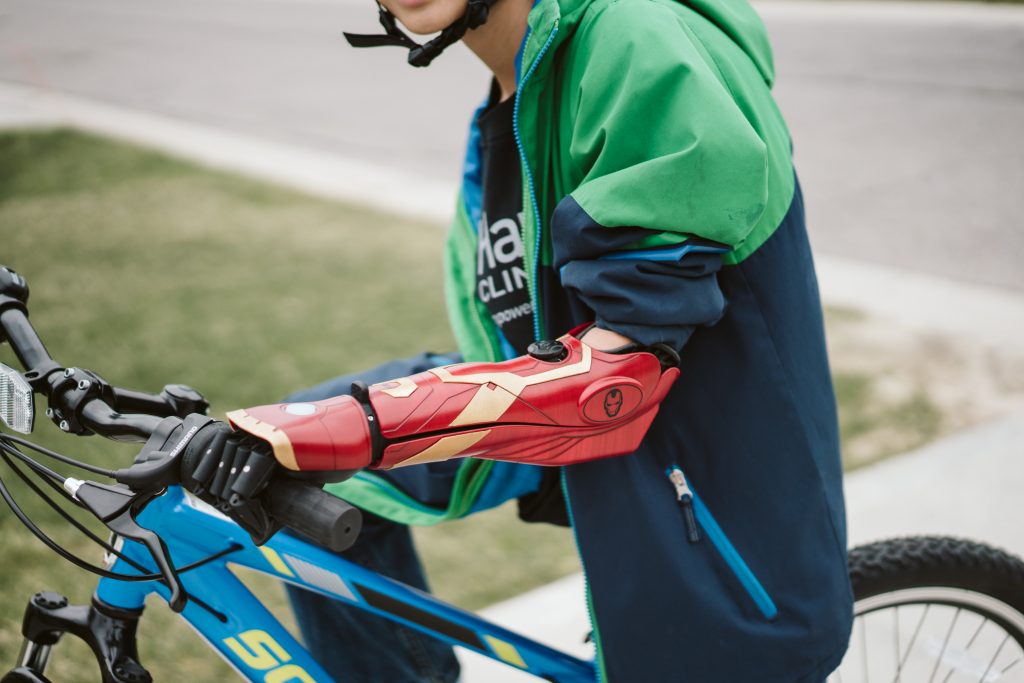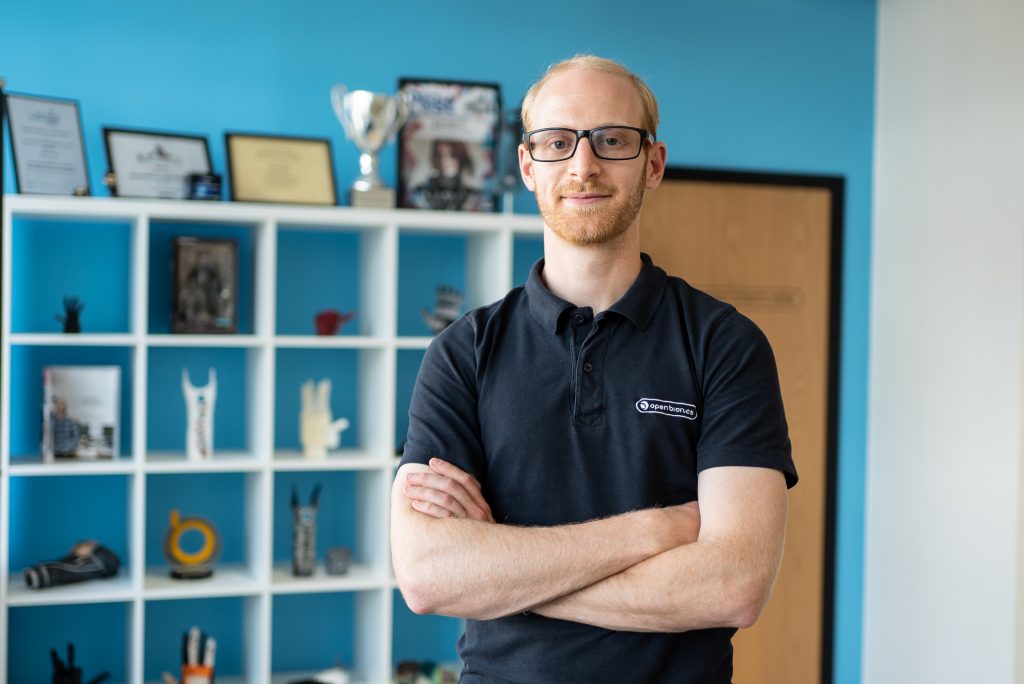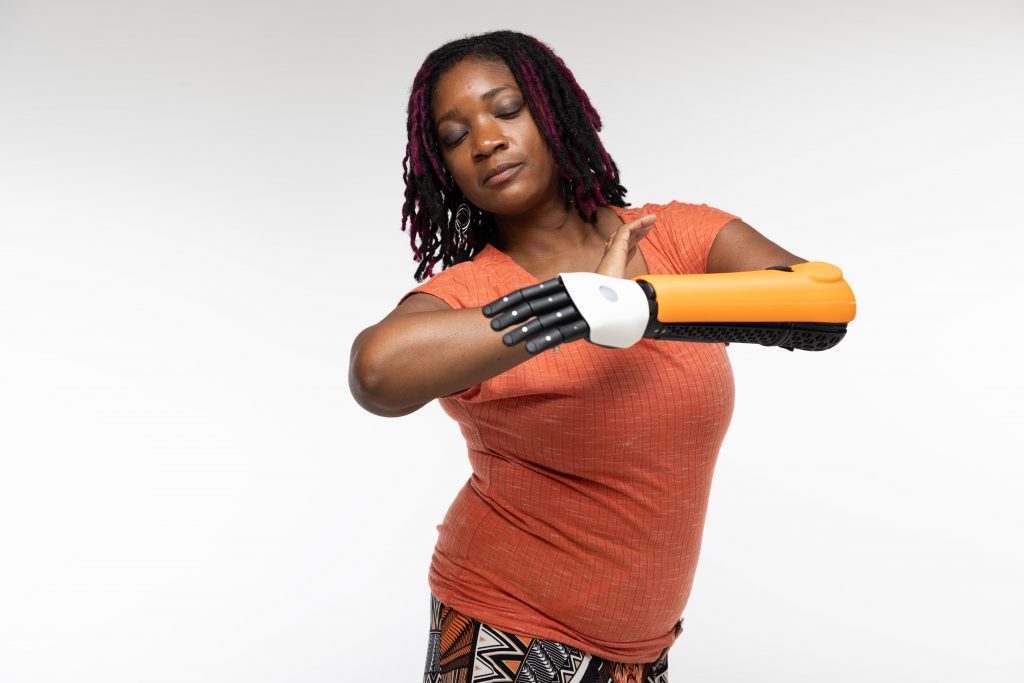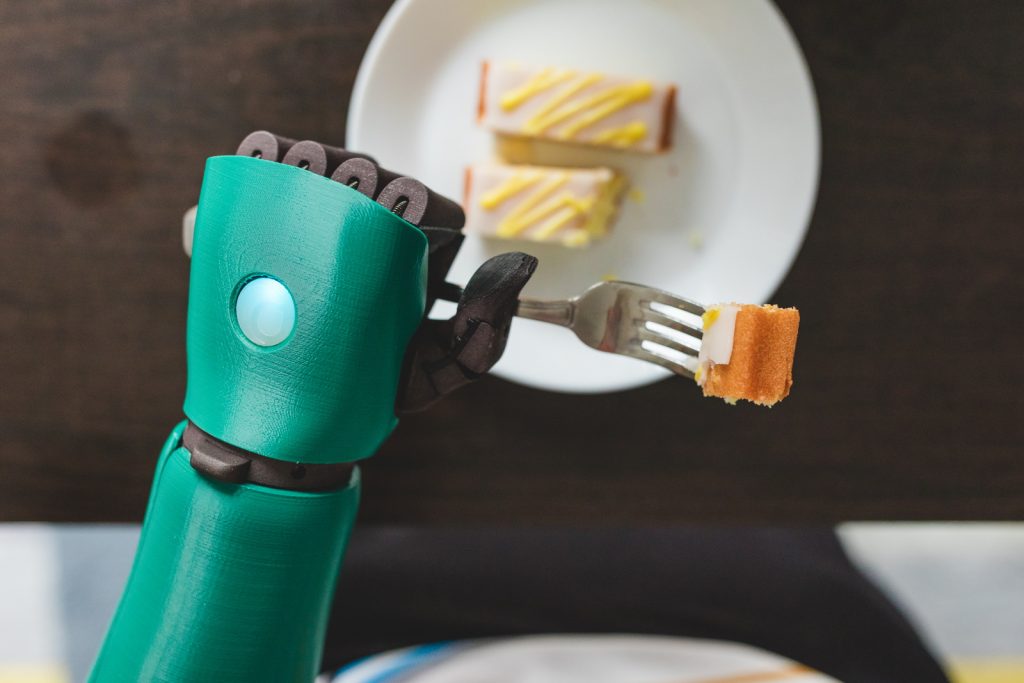“With the resources that are available online, there’s nothing stopping anyone from learning electronics, mechanics, programming, entrepreneurship, or how to build prototypes.”
Open Bionics develops medical devices that enhance the human body, and its first product is the hero arm for people living with a below-elbow limb difference. Joel Gibbard, CEO and co-founder, explains how he started creating bionic arms with a 3d printer
WHO OR WHAT INSPIRED YOU TO STUDY ROBOTICS?
As a child, my favourite toy was LEGO Technic. I’d spend hours engrossed in building various contraptions. This was definitely an early inspiration for me. I also had inspiration from my father, who used to tinker with electronics and radio-controlled robots. He used relays, transistors and a lot of analogue electronics, before semiconductors and integrated circuits really existed to teach me the principles of electronics and logic. The first Iron Man movie was released in 2008, just as I was about to start university, which brought robotics to the mainstream and made it more accessible.
WHAT DID YOU DO IN YOUR FIRST ROLE AS APPLICATIONS ENGINEER AT NATIONAL INSTRUMENTS?
This role primarily involved providing technical support and training to customers who were using National Instruments equipment in test and measurement applications. It was a great introduction to working in a large engineering organisation, with plenty of opportunities to problem solve while getting an understanding of how a larger company works. Ultimately, I found that the role didn’t afford me enough opportunity to explore new ideas or projects, and this was one of the realisations that led me to think about a different career path.
WHAT LED YOU TO FOUNDING THE OPEN HAND PROJECT?
During my university degree, I saw the potential of 3D printing as a transformative technology for prosthetics and orthotics, and assumed it would be adopted quite quickly. However, after following the 3D printing and prosthetics industries for some time, I noticed that nothing was being done to bring the two together, so I decided I would have a go at doing this myself. The price of most new technologies goes down quite rapidly after their initial launch, but I noticed that this wasn’t happening for bionic hands, the first of which was launched in 2008. I felt that this was preventing bionic hands from becoming accessible and that contributing to that accessibility would be a noble pursuit.
HOW DO YOU CONVINCE PEOPLE TO FUND A PROJECT LIKE THIS?
I bought one of the first commercially available 3D printers and started making prototypes. Raising money is extremely difficult, and you have to deal with a lot of rejection. You have to have a lot of self-belief, put yourself out there and not be afraid to ask for help. I was very fortunate to have a lot of support from my friends and family, and it was easy for people to understand the potential behind the idea and its impact.
HOW DID YOU MEET YOUR OPEN BIONICS CO-FOUNDER, SAMANTHA PAYNE?
We initially met while I was doing the Open Hand Project crowdfunding campaign in 2013. Samantha was working as a freelance journalist in Bristol, UK, and a mutual friend suggested she write an article about the Open Hand Project. At the time, she was reporting on technology start-ups in the city and was running a project developing a wearable technology prototype to support victims of domestic abuse. After experiencing the passion and excitement from the start-up founders she was interviewing, she wanted to do something similar, and the idea of working on a project that had social impact appealed to her.
© Open Bionics 2022
© Open Bionics 2022
© Open Bionics 2022
Open Bionics was initially founded so that we could start entering more start-up competitions and raise money. It gradually came to a point where we could start hiring a team and develop a product.
HOW IS THE HERO ARM REVOLUTIONISING THE PROSTHETICS INDUSTRY?
The Hero Arm was designed with a ‘user first’ mindset. This has led to some fundamental differences compared with most products in the industry, which have been designed to suit the needs of reimbursement systems, insurance schemes, doctors and clinicians. Other companies are making components, such as bionic hands, batteries, cables and sensors, which they sell to a prosthetist who will then build them into a prosthesis.
Our Hero Arm is fully integrated, and the result is that it is a truly bionic arm. It is lightweight, and we can customise the way the user’s arm looks. The lightweight, removable covers make the Hero Arm design even more distinctive. For prosthesis users, it represents a new mindset, enabling people to celebrate their limb differences, gain confidence and wear their prosthesis with pride.
WHAT IS YOUR VISION FOR THE FUTURE OF OPEN BIONICS?
I’d be very happy if Open Bionics can make a lasting improvement to the accessibility of advanced prosthetic and orthotic limbs. I envisage the development of new products that offer touch feedback, better control and more degrees of motion to people with limb loss. These features should be made available to anyone who needs them, free of charge. That means making sure healthcare systems fund them, that they are easy to fit on patients, and that they are simple to use.
LOOKING BACK, WHAT DO YOU WISH YOU HAD KNOWN WHEN YOU WERE YOUNGER?
The fastest way to learn new things is by talking to people. If you are an introvert, it feels easier to try and research around a subject and learn about it yourself, but you can learn much faster and more effectively by finding experts and learning directly from them.
WHAT ARE YOUR TOP TIPS FOR YOUNG PEOPLE HOPING TO A) BECOME A BIONICS ENGINEER AND/OR B) START THEIR OWN BUSINESS?
My main piece of advice would be to just start doing it. With the resources that are available online, there’s nothing stopping anyone from learning electronics, mechanics, programming, entrepreneurship, or how to build prototypes. It’s possible to have a ‘side hustle’ while studying at university or in full-time employment. You don’t have to have super innovative resources to teach you how to run a small business, either. The lessons you learn along the way will be extremely important and you’ll get better and better the more you try. If you want to become a bionics engineer or start your own business, start doing bionics engineering or start your own business! Do it today. It’s that simple.
ABOUT JOEL
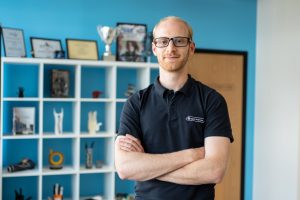
Joel studied robotics at the University of Plymouth in the UK. On graduating, he became an applications engineer at National Instruments before moving on to found the Open Hand Project, the aim of which was to make prosthetic hands more accessible to amputees. The project was funded through a crowdfunding campaign, which successfully raised £44k. Together, with co-founder Samantha Payne, he set up Open Bionics in 2014. In 2020, Joel was recognised with an MBE in the Queen’s Birthday Honours List for services to International Trade and Engineering Technology.


